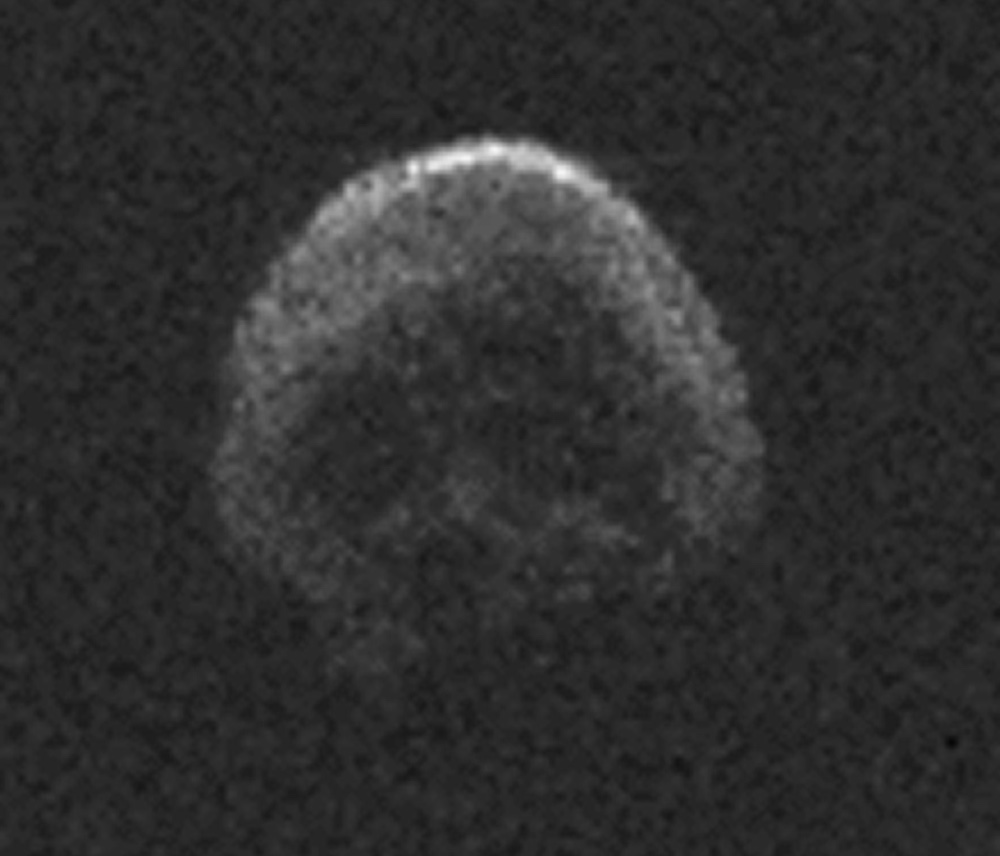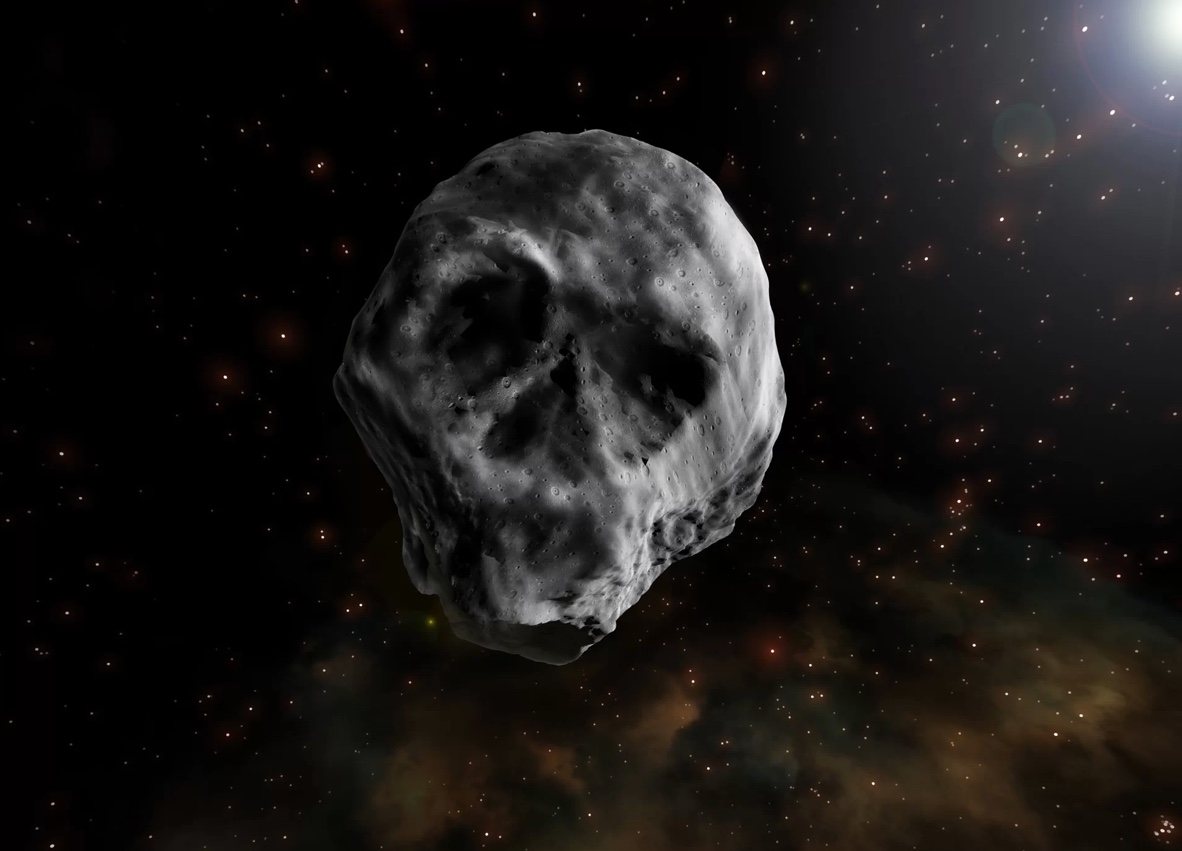Grinning-Skull Asteroid Set to Whiz by Earth
Better late to the Halloween party than never: An asteroid shaped like a grinning skull is set to pass by Earth on Nov. 11.
Asteroid 2015 TB145 was first discovered in 2015, when it zipped within 301,986 miles (486,000 kilometers) of Earth right on Halloween. According to NASA's Jet Propulsion Laboratory small-body object database, the asteroid's next flyby will not be nearly so close; it will pass about 24 million miles (38 million km) from our planet. That's about a quarter of the distance from the Earth to the sun.
The next time 2015 TB 145 approaches Earth won't be until 2082, when it will pass at about a third of the distance between the Earth and the sun. Its orbit will take it closer to Venus and Mercury in 2024, 2028 and 2037.
Scientists had the opportunity to snap some spooky images of 2015 TB 145 when it first passed the planet, in 2015. The pictures showed a mostly spherical rock with indentations that resembled gaping eye sockets and a nose hole, at least from some angles.

The asteroid is about 2,047 feet (625 meters) wide, according to a 2017 study, making it a relative pip-squeak, astronomically speaking. (By comparison, the asteroid thought to have wiped out the dinosaurs was about 6 miles, or 10 km, across.)
The skeletal rock didn't affect Earth on its 2015 flyby, and the asteroid won't have any effect on the planet during its more-distant November pass-by. However, researchers have found that the asteroid is not just spooky, but also special. According to NASA researchers, the asteroid's oblong orbit and its velocity suggest that it might be a dead comet, stripped of its icy debris tail by too many trips around the sun. Comet tails are tails of dust and gas that stream behind a comet due to solar radiation.

While the Halloween asteroid won't be coming very close to Earth on its flyby, there will be a few close shaves with other space rocks in the near future. According to Max-Planck-Institut für extraterrestrische Physik scientist Thomas G. Müller, an asteroid dubbed 1999 AN10 will pass 185,911 miles (299,196 km) from Earth on Aug. 7, 2027. On April 13, 2029, an asteroid named 99942 Apophis, after the Egyptian god of evil, will whiz by Earth at a distance of only 23,239 miles (37,400 km), about a tenth of the distance from the Earth to the moon.
Get the Space.com Newsletter
Breaking space news, the latest updates on rocket launches, skywatching events and more!
Original article on Live Science.
Join our Space Forums to keep talking space on the latest missions, night sky and more! And if you have a news tip, correction or comment, let us know at: community@space.com.

Stephanie Pappas is a contributing writer for Space.com sister site Live Science, covering topics ranging from geoscience to archaeology to the human brain and behavior. She was previously a senior writer for Live Science but is now a freelancer based in Denver, Colorado, and regularly contributes to Scientific American and The Monitor, the monthly magazine of the American Psychological Association. Stephanie received a bachelor's degree in psychology from the University of South Carolina and a graduate certificate in science communication from the University of California, Santa Cruz.










